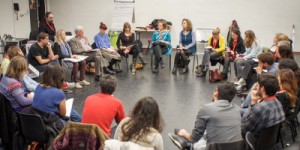University degrees: Courses
Course city: Bolzano
ESoDoc – European Social Documentary is a training project offered by ZeLIG, one of the few European schools to deal exclusively with documentary films. ESoDoc is supported by the MEDIA program of the European Union, and can boast an extensive network of partners that includes numerous institutions around the world.
The goal of ESoDoc is to create a bridge between the requests of the various protagonists involved in documentary production. Among these we find: independent authors and producers, non-governmental organizations (NGOs) and non-profit organizations (ONP), television broadcasters and a growing number of professionals in the new media sector, who deal with both the production of online documentaries and projects crossmedia.
ESoDoc intends to prepare today’s professionals for tomorrow’s market, making them participate in the change that the audiovisual world is experiencing today. The course focuses on a particular kind of documentary that is easily adaptable to different platforms, offering films that shift attention to issues such as human rights, social justice and environmental protection, in particular in developing countries.
The first edition of ESoDoc was held in 2004, and over the years the course has established itself as one of the most renowned training offers of the MEDIA program. From the beginning ESoDoc has identified the ideal platform on the web for this type of film, precisely because of its interactive and participatory nature.
Today, “Web 2.0” is no longer “new”, and filmmakers speak of “crossmedia” and “multi-platform programs” as a new way to create films, exchange information and encourage collaboration with the public, who is no longer alone a passive but also active spectator. Today tools such as blogs, photo and video sharing sites or mobile phones are used as tools to support your film, promoting it through social networks such as Facebook, MySpace or Youtube.
ESoDoc wants to provide its participants with an overview of these new tools, teaching them to use them productively for their film. But despite the introduction of these new tools, ESoDoc does not lose sight of the essential elements that are proper to the documentary: a universal theme, a unique point of view and a strong narrative.
ESoDoc therefore wants to combine old and new technologies to create films on human rights and environmental protection that involve the global community, which draw attention to the issues of social injustice, helping, in their small way, to create a better world.
